-
 Bitcoin
Bitcoin $105,128.3815
3.90% -
 Ethereum
Ethereum $2,416.0020
7.44% -
 Tether USDt
Tether USDt $1.0005
0.02% -
 XRP
XRP $2.1746
8.78% -
 BNB
BNB $639.2755
3.53% -
 Solana
Solana $144.4068
7.70% -
 USDC
USDC $1.0000
-0.01% -
 TRON
TRON $0.2729
1.26% -
 Dogecoin
Dogecoin $0.1628
6.63% -
 Cardano
Cardano $0.5826
7.56% -
 Hyperliquid
Hyperliquid $37.1757
6.20% -
 Sui
Sui $2.7783
11.64% -
 Bitcoin Cash
Bitcoin Cash $462.3940
2.42% -
 Chainlink
Chainlink $13.1350
11.22% -
 UNUS SED LEO
UNUS SED LEO $9.1304
0.83% -
 Stellar
Stellar $0.2476
8.34% -
 Avalanche
Avalanche $18.0617
6.94% -
 Toncoin
Toncoin $2.9043
3.64% -
 Shiba Inu
Shiba Inu $0.0...01161
7.29% -
 Hedera
Hedera $0.1515
11.26% -
 Litecoin
Litecoin $84.2187
3.78% -
 Monero
Monero $313.8446
4.70% -
 Ethena USDe
Ethena USDe $1.0006
0.03% -
 Polkadot
Polkadot $3.4344
6.81% -
 Dai
Dai $0.9999
0.00% -
 Bitget Token
Bitget Token $4.2647
5.88% -
 Uniswap
Uniswap $6.9164
11.66% -
 Pepe
Pepe $0.0...09897
10.79% -
 Pi
Pi $0.5326
6.57% -
 Aave
Aave $259.4000
13.30%
What does the Williams indicator rebound quickly after falling below 20 indicate?
A sharp rebound in the Williams %R from below -80 often signals a strong reversal, especially when confirmed by volume spikes or bullish candlestick patterns.
Jun 24, 2025 at 04:49 pm
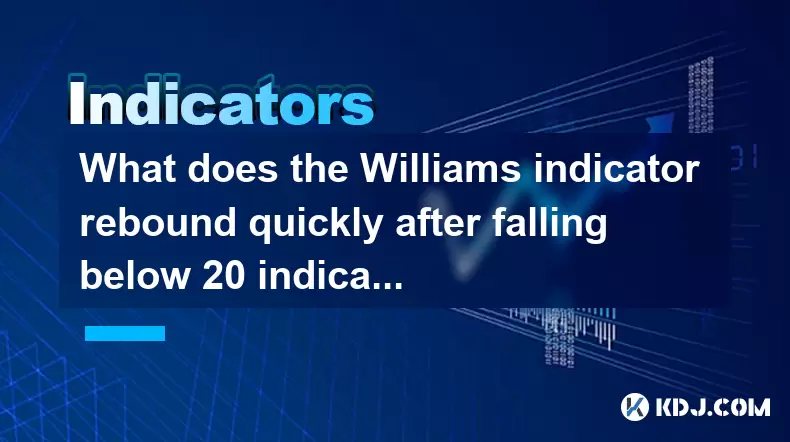
Understanding the Williams %R Indicator
The Williams %R indicator, also known as Williams Percent Range, is a momentum oscillator used in technical analysis to identify overbought and oversold conditions in financial markets, including cryptocurrencies. It was developed by Larry Williams and typically operates on a scale from 0 to -100. In the context of cryptocurrency trading, this indicator helps traders assess potential reversal points.
A reading above -20 suggests that an asset may be overbought, while a reading below -80 indicates oversold conditions. However, these levels are not always direct signals for trade entries; they must be interpreted within the broader market context. The key focus here is when the indicator rebounds quickly after falling below -80 (or sometimes even -20), which can signal strong price reversals or shifts in momentum.
What Happens When the Williams %R Falls Below -80?
When the Williams %R drops below -80, it indicates that the cryptocurrency has been trading near its lowest price over the specified look-back period (usually 14 periods). This is considered a sign of extreme bearish pressure.
- Price exhaustion might occur, meaning sellers have largely exhausted their influence.
- Buyers may begin stepping in, sensing a potential reversal.
- A sharp rebound in the Williams %R line from below -80 could indicate a sudden shift in sentiment.
In crypto markets, where volatility is high, such a drop followed by a quick bounce often reflects a short-term bottom forming or a strong support level being tested and holding.
Why Does the Williams %R Rebound Quickly After Dipping Below -80?
A rapid rebound in the Williams %R after falling below -80 suggests that despite intense selling pressure, buyers have stepped in with enough force to push prices back up. This can happen due to several reasons:
- Market manipulation: In crypto, large players (whales) may create artificial dips before triggering rapid recoveries.
- Algorithmic trading bots reacting to oversold conditions can trigger automated buying.
- Fundamental news events such as positive announcements or regulatory developments can cause sudden shifts.
- Technical support levels aligning with the oversold condition can attract buyers.
This phenomenon is especially notable in highly liquid crypto pairs like BTC/USDT or ETH/USDT, where price movements are swift and pronounced.
How to Interpret a Quick Rebound in Trading Strategy
Traders often use the quick rebound of Williams %R from below -80 as a potential buy signal, especially if it coincides with other confirming indicators or candlestick patterns.
Here’s how to incorporate this into your strategy:
- Look for bullish divergence: If the price makes a new low but the Williams %R does not, it suggests weakening bearish momentum.
- Combine with moving averages: Use the 50-period or 200-period moving average to confirm trend direction.
- Watch volume spikes: A surge in volume during the rebound can validate the strength of the reversal.
- Use candlestick confirmation: Look for bullish patterns like hammer or engulfing candles at the time of the rebound.
It's crucial to avoid acting solely on the Williams %R without additional confirmation, as false signals are common in volatile crypto environments.
Practical Example: Using the Williams %R in Crypto Charts
To better understand how this works in real-time trading, consider the following example using a BTC/USDT 4-hour chart:
- On a given day, Bitcoin’s price falls sharply, hitting a local low.
- The Williams %R dips below -80, indicating oversold conditions.
- Within a few hours, the price starts recovering, and the Williams %R line rises sharply back toward -50.
- During this recovery phase, you notice:
- An increase in trading volume
- A bullish engulfing candle appears
- The price holds above the 50-period moving average
These signs together suggest a potential long entry opportunity. Traders may set stop losses just below the recent swing low and target resistance zones based on previous highs or Fibonacci retracement levels.
Frequently Asked Questions
Q: Can the Williams %R be used alone for trading decisions in crypto?
While the Williams %R provides valuable insights into overbought and oversold levels, relying solely on it can lead to false signals. It should be used alongside other tools such as volume indicators, moving averages, and candlestick patterns to improve accuracy.
Q: What timeframes are best suited for observing a quick rebound in Williams %R?
Shorter timeframes like 1-hour or 4-hour charts tend to show more actionable signals for intraday traders. However, longer timeframes like daily charts can provide stronger confirmation of trend reversals, especially for swing traders.
Q: How does the Williams %R differ from the RSI in crypto trading?
Both are momentum oscillators, but the Williams %R is more sensitive to short-term price swings, making it useful for spotting quick reversals. The RSI, on the other hand, smooths out data over time and is often used to detect broader trends and divergences.
Q: Is a rebound from below -80 more significant than one from above -20?
Yes, a rebound from below -80 typically indicates a stronger reversal since it reflects a shift from extreme oversold conditions. Rebounds from above -20 usually signify overbought pullbacks rather than major trend changes.
Disclaimer:info@kdj.com
The information provided is not trading advice. kdj.com does not assume any responsibility for any investments made based on the information provided in this article. Cryptocurrencies are highly volatile and it is highly recommended that you invest with caution after thorough research!
If you believe that the content used on this website infringes your copyright, please contact us immediately (info@kdj.com) and we will delete it promptly.
- XRP Price Surge: Latest News and Analysis – Can XRP Reach New Heights?
- 2025-06-24 20:45:12
- Stablecoin Surge in South Korea: Kakao Pay's Venture and the Stock Rally
- 2025-06-24 20:25:13
- Unstaked Presale Heats Up as SHIB Evolves & Toncoin GameFi Takes Aim
- 2025-06-24 21:05:12
- DOT Miners, Middle East, and Investors: Navigating Uncertainty
- 2025-06-24 20:25:13
- Bitcoin Purchasing in 2025: A New Yorker's Guide to the Crypto Craze
- 2025-06-24 21:05:13
- Blockchain Stocks, Decentralized World, and Profit: Navigating the Future of Finance
- 2025-06-24 21:25:12
Related knowledge
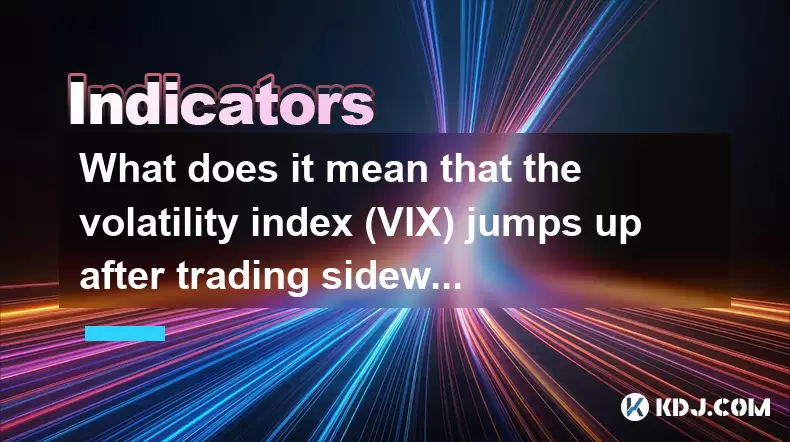
What does it mean that the volatility index (VIX) jumps up after trading sideways at a low level?
Jun 24,2025 at 09:35pm
Understanding the Volatility Index (VIX)The Volatility Index (VIX), often referred to as the 'fear gauge,' is a real-time market index that represents the market's expectation of 30-day forward-looking volatility. It is calculated by the Chicago Board Options Exchange (CBOE) based on the price inputs of S&P 500 index options. In the context of cryptocur...

What does it mean when the stochastic indicator repeatedly fluctuates at the 50 horizontal line?
Jun 24,2025 at 09:08pm
Understanding the Stochastic Indicator in Cryptocurrency TradingThe stochastic indicator is a popular momentum oscillator used by traders to identify potential trend reversals and overbought or oversold conditions. In cryptocurrency trading, where price movements can be highly volatile, understanding how this tool behaves becomes crucial for making info...
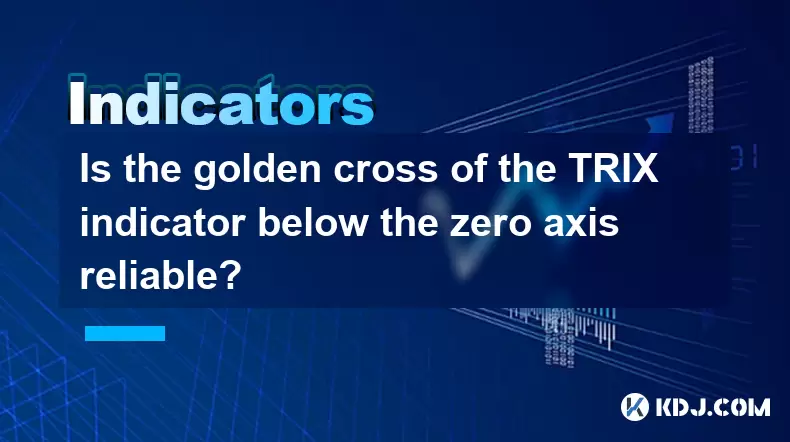
Is the golden cross of the TRIX indicator below the zero axis reliable?
Jun 24,2025 at 09:22pm
Understanding the TRIX Indicator and Its SignificanceThe TRIX (Triple Exponential Moving Average) indicator is a momentum oscillator used in technical analysis to identify oversold or overbought conditions, as well as potential trend reversals. It is calculated by smoothing price data three times using exponential moving averages and then taking the per...
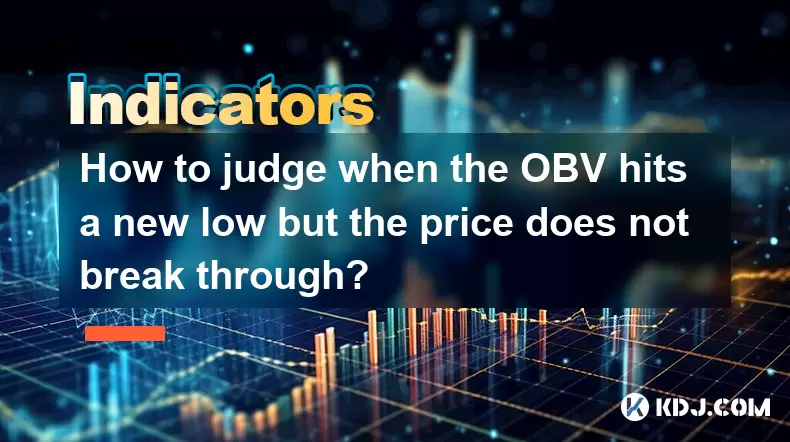
How to judge when the OBV hits a new low but the price does not break through?
Jun 24,2025 at 07:56pm
Understanding the Basics of OBV and Price ActionOn-Balance Volume (OBV) is a momentum indicator that uses volume flow to predict changes in stock or cryptocurrency prices. The core principle behind OBV is that volume often precedes price movement. When OBV hits a new low, but the price does not break through its previous support level, this can indicate...
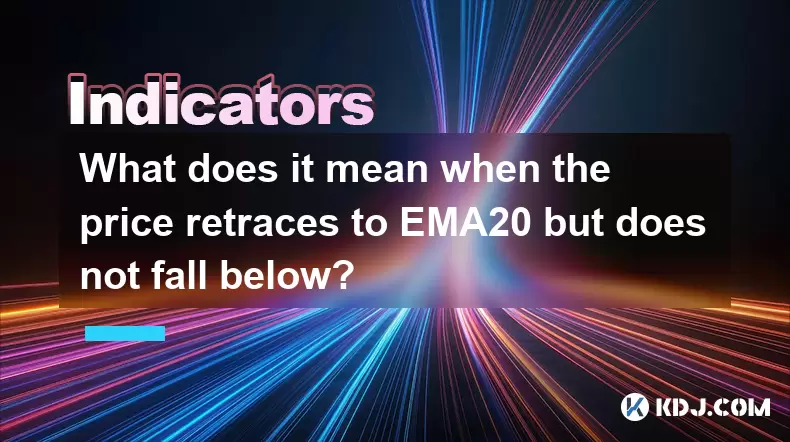
What does it mean when the price retraces to EMA20 but does not fall below?
Jun 24,2025 at 08:49pm
Understanding the EMA20 Indicator in Cryptocurrency TradingThe Exponential Moving Average (EMA) with a 20-period setting, commonly referred to as EMA20, is one of the most widely used technical indicators in cryptocurrency trading. It gives more weight to recent price data, making it more responsive to current price movements compared to simple moving a...
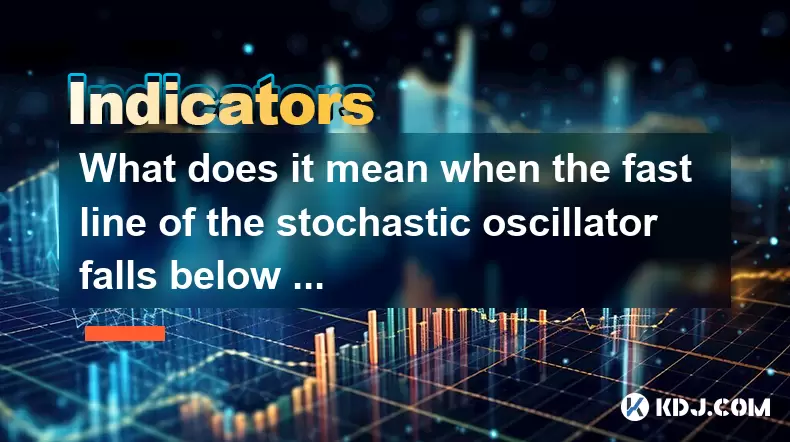
What does it mean when the fast line of the stochastic oscillator falls below the slow line?
Jun 24,2025 at 07:07pm
Understanding the Stochastic OscillatorThe stochastic oscillator is a momentum indicator used in technical analysis to assess overbought or oversold conditions in financial markets, including cryptocurrencies. It consists of two lines: the fast line (typically %K) and the slow line (typically %D). The fast line represents the current closing price relat...

What does it mean that the volatility index (VIX) jumps up after trading sideways at a low level?
Jun 24,2025 at 09:35pm
Understanding the Volatility Index (VIX)The Volatility Index (VIX), often referred to as the 'fear gauge,' is a real-time market index that represents the market's expectation of 30-day forward-looking volatility. It is calculated by the Chicago Board Options Exchange (CBOE) based on the price inputs of S&P 500 index options. In the context of cryptocur...

What does it mean when the stochastic indicator repeatedly fluctuates at the 50 horizontal line?
Jun 24,2025 at 09:08pm
Understanding the Stochastic Indicator in Cryptocurrency TradingThe stochastic indicator is a popular momentum oscillator used by traders to identify potential trend reversals and overbought or oversold conditions. In cryptocurrency trading, where price movements can be highly volatile, understanding how this tool behaves becomes crucial for making info...

Is the golden cross of the TRIX indicator below the zero axis reliable?
Jun 24,2025 at 09:22pm
Understanding the TRIX Indicator and Its SignificanceThe TRIX (Triple Exponential Moving Average) indicator is a momentum oscillator used in technical analysis to identify oversold or overbought conditions, as well as potential trend reversals. It is calculated by smoothing price data three times using exponential moving averages and then taking the per...

How to judge when the OBV hits a new low but the price does not break through?
Jun 24,2025 at 07:56pm
Understanding the Basics of OBV and Price ActionOn-Balance Volume (OBV) is a momentum indicator that uses volume flow to predict changes in stock or cryptocurrency prices. The core principle behind OBV is that volume often precedes price movement. When OBV hits a new low, but the price does not break through its previous support level, this can indicate...

What does it mean when the price retraces to EMA20 but does not fall below?
Jun 24,2025 at 08:49pm
Understanding the EMA20 Indicator in Cryptocurrency TradingThe Exponential Moving Average (EMA) with a 20-period setting, commonly referred to as EMA20, is one of the most widely used technical indicators in cryptocurrency trading. It gives more weight to recent price data, making it more responsive to current price movements compared to simple moving a...

What does it mean when the fast line of the stochastic oscillator falls below the slow line?
Jun 24,2025 at 07:07pm
Understanding the Stochastic OscillatorThe stochastic oscillator is a momentum indicator used in technical analysis to assess overbought or oversold conditions in financial markets, including cryptocurrencies. It consists of two lines: the fast line (typically %K) and the slow line (typically %D). The fast line represents the current closing price relat...
See all articles
























































































